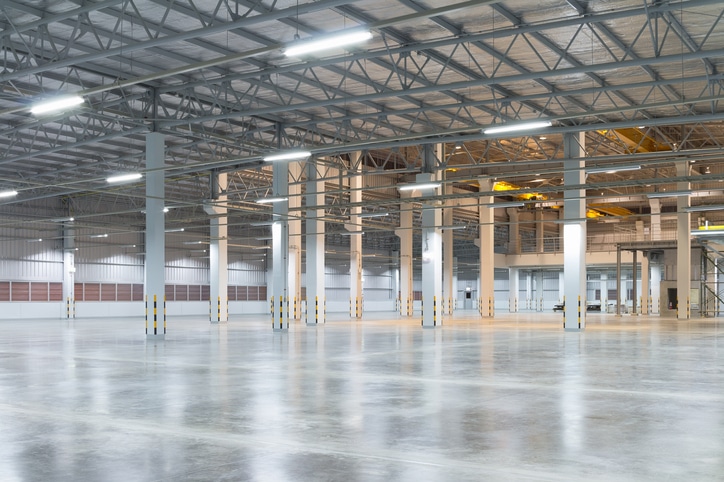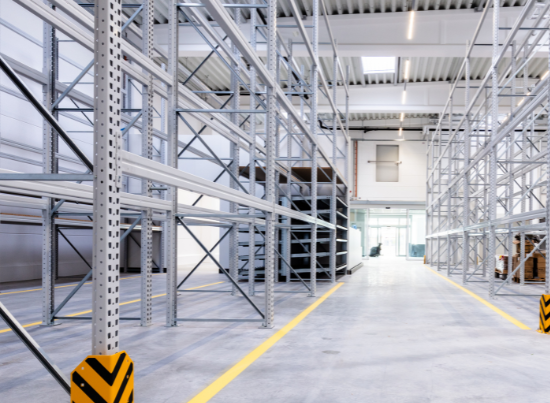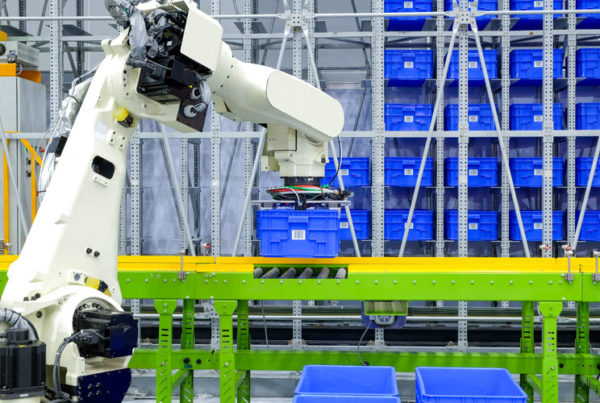As we discussed in Part 1 of this series, Rattled Supply Chains, the rise of eCommerce has strained a global supply chain that was too focused on Just-in-Time (JIT) logistics. Retailers were left without enough inventory to meet the demand shocks of COVID-19. As supply chains began to normalize later in 2020, retailers also found themselves without enough warehousing space for the new levels of inventory they were predicted to need.
This lack of space created both logistical and financial issues. Shelves in stores were left bare, and online orders to residents were too frequently cancelled, due to the inability to get merchandise where it needed to be. At the same time, rent for warehousing space in 2020 increased by 5.6% year-over-year.
As we put 2020 behind us, retailers and suppliers are trying to increase their inventory levels to meet the demand shocks COVID-19 is still causing. Consumers are largely unaware of the problems the industry is facing, and the efforts people in it are making to adjust to the new normal. Consumers only know that their store is unable to stock their favorite brand of necessities, and that the equipment at their favorite exercise website is still on back order.
In Part 2 of this series, we’ll look at some of the particular challenges online retailers face in warehousing, and some of the innovative solutions that are being found.
More grade A space is needed
The sudden move to eCommerce during a warehousing shortage is a particularly bad combination.
Fulfillment for online companies demands three times more warehousing space than for brick-and-mortar retailers. Companies engaged in eCommerce tend to carry a greater variety of SKUs that are entirely kept within their warehouse instead of being moved to store shelves. The warehouses need to be well designed to control the flow of goods from receiving, through storage, and out to shipping. Everything – receiving, picking, packing, returns, and more – has to happen within the walls of an eCommerce warehouse.
It’s estimated that, for each $1 billion in sales, eCommerce companies need 1.2 million square feet of warehousing and distribution space. With eCommerce predicted to reach $1.5 trillion in 2025, that amounts to an additional 1 billion square feet of warehousing space. Fully 100 million square feet of that will be for cold-storage to meet the increased demand for groceries.
As supply chain managers scramble to find the room to increase their inventory levels in a new fulfillment model that requires more space, the facilities they can find often aren’t designed for the fulfillment industry, and need to be remodeled and retrofitted. Particularly in urban areas, where square footage is at a premium, intelligent warehousing design and engineering have to be applied to build up into a multi-story space, rather than out as in a traditional warehouse.
The leading indicator: Brick and mortar stores
Even before the quarantines and social distancing orders of 2020, brick and mortar stores struggled to keep their doors open against the competition of eCommerce. In 2017, industry experts predicted that one in four U.S. malls would be closed by 2022. By June of 2020, those numbers were being revised to one-third of the malls closed by 2021.
The news for smaller brick-and-mortar retailers is perhaps even more dire. In 2019, a record 9,302 stores closed in the US alone. COVID-19 helped smash that record – 12,200 physical storefronts were permanently closed in 2020 in the US.
While this is bad news for the people these businesses employed, and the communities that relied on the taxes they produced, it’s not all bad news for eCommerce retailers.
These closing storefronts are leaving conveniently located buildings empty at the same time that eCommerce retailers are in desperate need of warehousing space. And to meet the needs of a changing supply chain – to provide services like free, fast delivery – they need much of that warehousing space to be located close to the very markets that brick-and-mortar retailers are abandoning.
eCommerce giants like Amazon are already looking to convert empty Sears and JCPenny locations into distribution centers. Walmart, Home Depot, and others are converting parts of their stores – and entire facilities – into eCommerce distribution hubs.
To Victor Calanog, Chief CRE Economist at Moody’s Analytics, the ability to convert these empty and under-used spaces, and fill necessary niches in the changing supply chain, will separate the “winners” from the “losers” in the eCommerce economy.
Locating distribution hubs and even microdistribution or nanofulfillment centers in abandoned stores, malls, and restaurants will not only help ensure the ability to meet future demand shocks, but will also be part of the solution of last-mile delivery.
This model of fulfillment – with a more distributed warehousing base – locates warehouses closer to the residences and offices where the goods will be delivered. This enables the deliveries to be done more cheaply and quickly than ever before. It will also require fewer delivery vehicles to be on the road, especially during peak commuting times.
Using predictive analytics, these micro-warehouses can restock high value goods overnight, or during off-peak hours. This will lower the carbon footprint of carrier services, and lessen their presence on busy roads during stressful rush hours, making them better neighbors for the communities they serve.
But to do all of that, one more piece is needed in this new fulfillment model – smart, versatile, thoughtfully integrated automation.
We discuss all that and more in the next part in our series.
Like this article? Don’t forget to share it!
Increased efficiencies and operational expansions of e-commerce retailer
PeakLogix streamlined Crutchfield’s facility to decrease labor costs and increase fulfillment, productivity and doubling shipping throughput. The new design achieved 25% gains in picking throughput and $250,000 annual savings.






